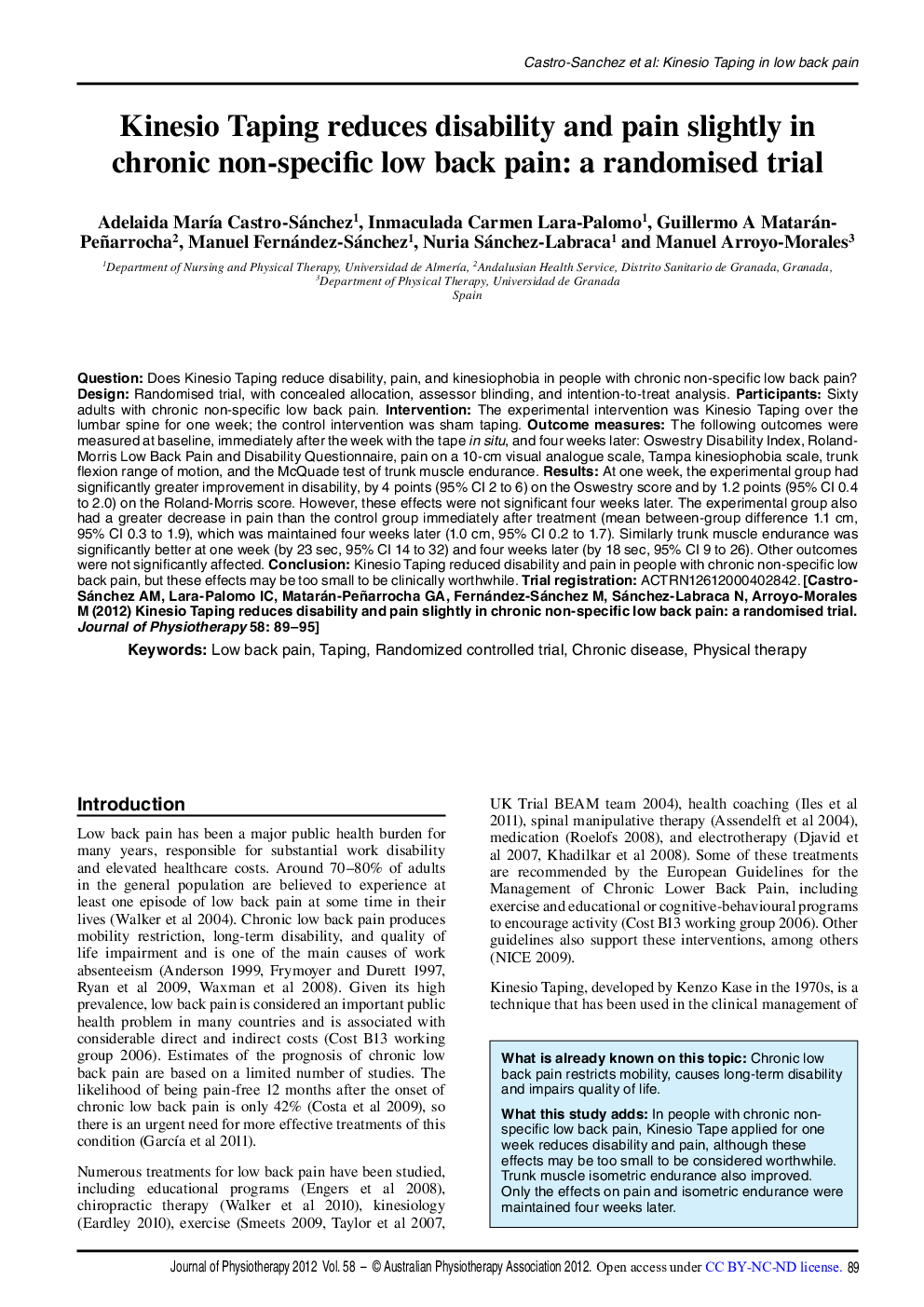| Article ID | Journal | Published Year | Pages | File Type |
|---|---|---|---|---|
| 5864241 | Journal of Physiotherapy | 2012 | 7 Pages |
QuestionDoes Kinesio Taping reduce disability, pain, and kinesiophobia in people with chronic non-specific low back pain?DesignRandomised trial, with concealed allocation, assessor blinding, and intention-to-treat analysis.ParticipantsSixty adults with chronic non-specific low back pain.InterventionThe experimental intervention was Kinesio Taping over the lumbar spine for one week; the control intervention was sham taping.Outcome measuresThe following outcomes were measured at baseline, immediately after the week with the tape in situ, and four weeks later: Oswestry Disability Index, Roland- Morris Low Back Pain and Disability Questionnaire, pain on a 10-cm visual analogue scale, Tampa kinesiophobia scale, trunk flexion range of motion, and the McQuade test of trunk muscle endurance.ResultsAt one week, the experimental group had significantly greater improvement in disability, by 4 points (95% CI 2 to 6) on the Oswestry score and by 1.2 points (95% CI 0.4 to 2.0) on the Roland-Morris score. However, these effects were not significant four weeks later. The experimental group also had a greater decrease in pain than the control group immediately after treatment (mean between-group difference 1.1Â cm, 95% CI 0.3 to 1.9), which was maintained four weeks later (1.0Â cm, 95% CI 0.2 to 1.7). Similarly trunk muscle endurance was significantly better at one week (by 23 sec, 95% CI 14 to 32) and four weeks later (by 18 sec, 95% CI 9 to 26). Other outcomes were not significantly affected.ConclusionKinesio Taping reduced disability and pain in people with chronic non-specific low back pain, but these effects may be too small to be clinically worthwhile. Trial registration: ACTRN12612000402842.
